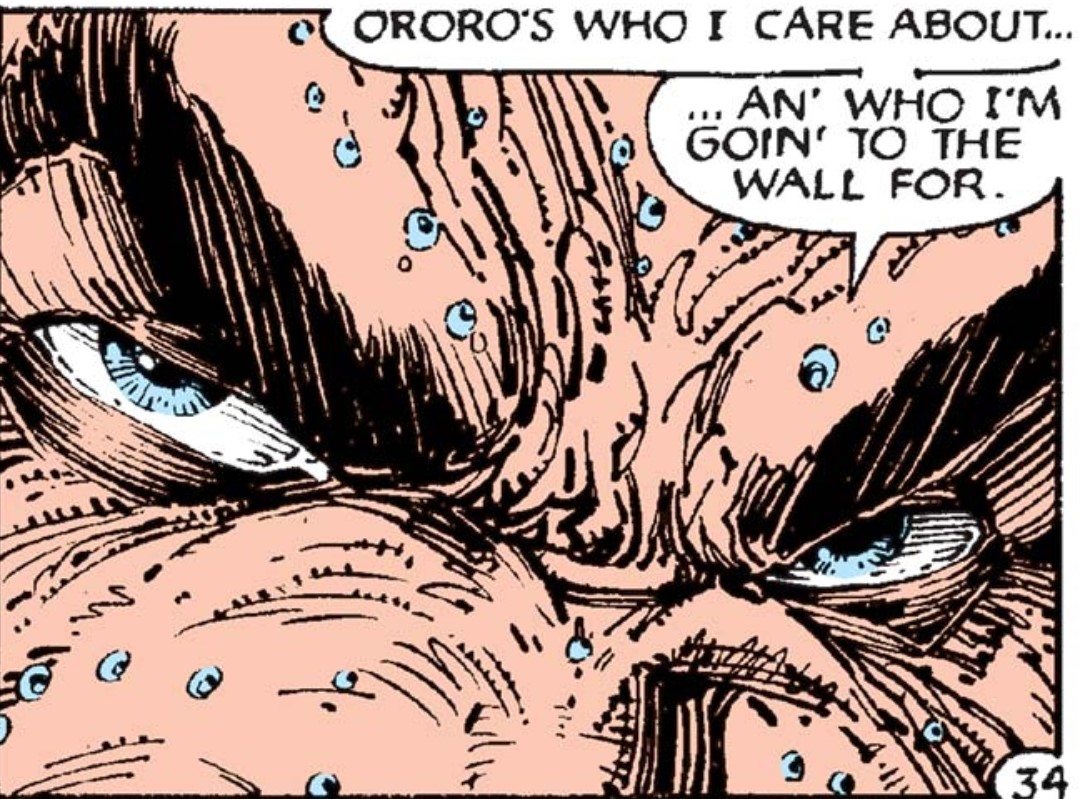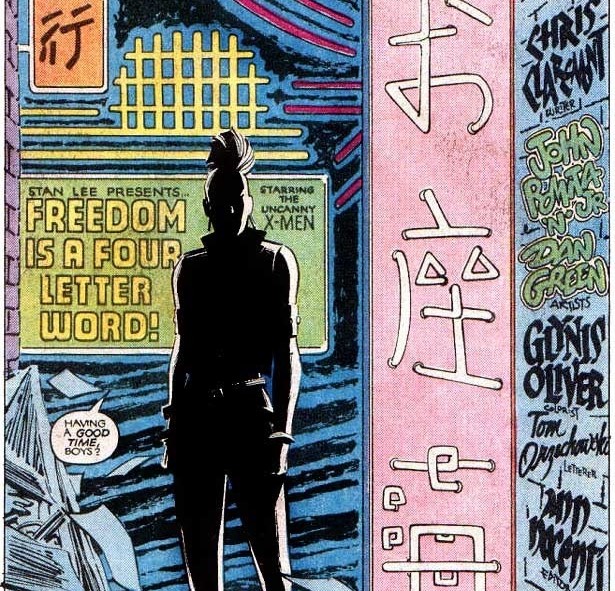The Wolverine/Storm relationship, in all its facets, is one of the most complex and longstanding in the entirety of Claremont’s run, focusing on his two most foregrounded characters as they mutually support each other’s development and growth as characters and as people #xmen 1/7 

The pair is defined through mutual respect, intimate trust (something that does not come naturally to either), romantic subtext, and an implied casual sexual relationship that gets interrupted by circumstance, but could easily have been happening the entire time, off-panel. 2/7 

Author Miles Booy argues that in early portrayals, Wolverine is symbolic of a primitive masculinity (through “ferocity”) while Storm symbolizes, in contrast, “feminine grace” through her primitive closeness to nature (26). Sort of Adam and Eve of the X-Men. 3/7 

Through direct influence on each other, the pair evolve and mature toward each other with Ororo cultivating her primitive ferocity, self-assertiveness, and the respect of her peers, while Logan cultivates grace through patience, nurturing others, and community. 4/7 

When Claremont seeks to establish Storm’s capability as a leader, he has her stand up to Wolverine. When Wolverine experiences doubt, or needs to be called out on something, it’s Storm who has to do it, the one he respects the most. 5/7 

Toward the end of the run, it is, arguably, Storm’s relationship to Gambit that spurs Wolverine to initially despise the newest X-Man and to enter into a traditional masculine rivalry with him (despite having arguably outgrown such behaviour at this point). 6/7 

Through it all, Claremont foregrounds the Ororo/Logan relationship as a resolute foundation of the collective, arguably the core of the X-Men themselves, particularly in the later years. 7/7 

• • •
Missing some Tweet in this thread? You can try to
force a refresh






















